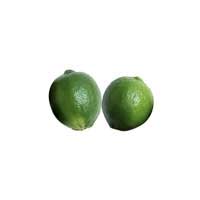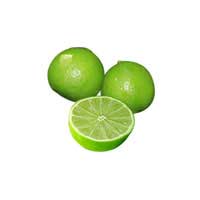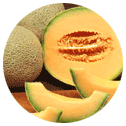 Full List of Fruits
Full List of Fruits  Persian lime
Persian limePersian lime Fruit
Scientific name - Citrus latifolia
Persian Lime has the scientific name Citrus latifolia; the fruit has a diameter of 6 cm and usually green in color after ripening turns to be yellow. The aroma is peculiar and the flesh is green with no seeds. From its name it could be found that it plays an important role in Persian cuisine. The texture could be found with a thick skinned coating with only a sizeable amount of aroma compared with that of the regular one. These lemons are most often preferred due to its bigger size, longer life span as a fruit, ability to survive in any climate, no bitterness which adds on to its unique flavor. Commercially the fruit is very popular and most preferred too.
![]() Nutritional Value of Persian lime
Nutritional Value of Persian lime
| Amount Per Serving | Calories | 20 |
| Total Fat | 0.01g |
| Saturated Fat | 0g |
| Cholesterol | 0g |
| Sodium | 1.3mg |
| Total Carbohydrate | 7.1g |
| Dietary Fibers | 1.9g |
| Sugars | 5.2g |
| Protein | 0.5g |
These limes are most suitable to make beverages as it is a fresh fruit, They are also used to make salads, can be served along with avocado fruits. These are usually taken in non-alcoholic as well as alcoholic beverages which include drinks such as daiquiris, Cuban mojitos, Brazilian caiparinhas and the traditional lemonades.
![]() Health Benefits of Persian lime
Health Benefits of Persian lime
Persian limes also offer numerous health benefits due to their high levels of vitamin C, vitamin A, magnesium, phosphorus, and other essential nutrients.
The high levels of vitamin C in Persian limes can help to boost the immune system and protect against infection, while also providing antioxidant protection. Vitamin C can also help to reduce the risk of certain types of cancer by protecting cells from damage caused by free radicals. Additionally, the vitamin A present in Persian limes can help to improve vision and protect against age-related macular degeneration.
Persian limes are also a good source of magnesium and phosphorus, both of which are important for bone health. Magnesium helps to regulate calcium levels in the body and can help to reduce the risk of osteoporosis. Phosphorus also plays an important role in bone health, as it helps to strengthen bones and teeth. Persian limes are also a good source of dietary fiber, which can help to regulate digestion and reduce the risk of constipation.
In addition to these benefits, Persian limes are also a good source of potassium. Potassium helps to regulate the body's fluid balance and plays an important role in heart health. Regular consumption of Persian limes can help to lower blood pressure and reduce the risk of stroke and heart attack.
Overall, Persian limes are a nutritious and delicious citrus fruit that can provide numerous health benefits. They are an excellent source of vitamins, minerals, and dietary fiber, and can help to improve overall health and well-being.
Persian limes, or Tahitian limes, are one of the most popular lime varieties in the world. These limes are small and round, with a vivid green color, and are highly aromatic. They are prized for their juice, which is acidic, tart and fragrant.
When selecting Persian limes, look for those that are bright green in color and firm to the touch. Avoid limes that are shriveled, discolored, or overly soft. It's best to buy limes in small quantities as they spoil quickly.
To store Persian limes, keep them at room temperature away from direct sunlight. Limes will last for a few days at room temperature. To extend their shelf life, store them in a plastic bag in the refrigerator. Whole limes should last for up to two weeks in the refrigerator, while cut limes can last for up to four days.
When freezing Persian limes, it is best to juice them first. Place the juice in an airtight container or plastic bag and freeze for up to 6 months. To thaw, simply place the container in the refrigerator until the juice is thawed.
Persian limes are an excellent source of vitamin C and other nutrients, and are a great way to add flavor and zest to dishes. They are also used to make delicious drinks and cocktails. Enjoy these limes fresh, frozen or in their juice form, and enjoy their tart and fragrant flavor.
The harvesting is done by hand but a gig also can be used. Around 8-12 times a year the harvest takes place, the peak time of harvest is July to September ,70 % of crops matures from May. Nearly 40 % of crops is used only for the purpose of lime juice concentrate. The fruit when immature does not produce juice so it must not be picked at that time. There are certain specifications provided in terms of size and grade for harvesting and are strictly viewed. The limes that are picked must be graded, washed, waxed and finally packed, when they are taken for shipment they must be purified with the fumes of methyl bromide to avoid being overrun by Caribbean fruit fly. The demand for this fruit sustains all around the year.


















